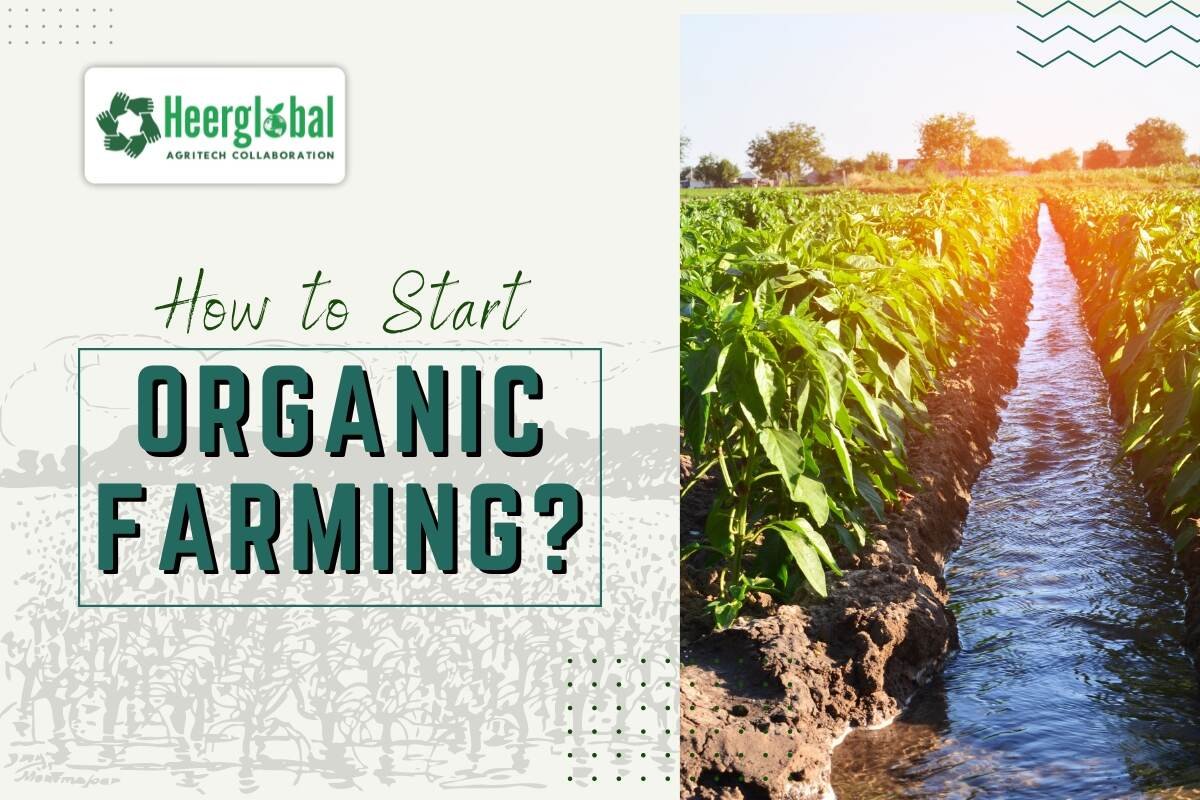How to Start Organic Farming?
Transitioning from conventional chemical farming to organic farming in India requires careful planning and a step-by-step approach. Here’s a detailed guide on how a farmer can start organic farming, the time it may take to convert, and how to sell organic products in the market:
Education and Training
The farmer should begin by educating themselves about organic farming principles, techniques, and best practices specific to the region. There are various resources available, such as government agricultural departments, NGOs, and online courses that offer training in organic farming methods.
Soil Testing and Improvement
Conduct a thorough soil test to assess the soil’s health, nutrient levels, and pH. Based on the results, the farmer can develop a soil improvement plan using organic amendments like compost, green manure, and natural fertilizers. Choose crops that are well-suited to the local climate and soil conditions. Implement crop rotation practices to maintain soil fertility and reduce the risk of pests and diseases.
Composting and Organic Waste Management
Gradually reduce the use of chemical fertilizers, pesticides, and synthetic growth regulators. Instead, start incorporating organic inputs to improve soil health and plant nutrition. Set up a composting system on the farm to recycle organic waste, crop residues, and livestock manure. Compost serves as a valuable source of organic nutrients for the crops.
Types of Organic Fertilizers
Composting: Collect organic waste, create a compost pile, and turn it regularly. After a few months, you’ll have nutrient-rich compost.
Vermicomposting: Use earthworms to decompose organic waste and produce valuable worm castings.
Green Manure: Grow cover crops like legumes to enrich the soil when tilled back.
Liquid Organic Fertilizer: Make compost tea by steeping compost in water for a nutrient-packed liquid fertilizer.
Bone Meal and Fish Meal: Process crushed bones or fish waste for natural phosphorus and nitrogen sources.
Seaweed Fertilizer: Collect seaweed, rinse it, and create a mineral-rich liquid fertilizer.
Biofertilizers: Use beneficial microorganisms like Rhizobium and Azotobacter to enhance nutrient availability.
Use Organic or Natural Pesticides
Using natural pesticide methods, farmers in India can protect their crops from pests while promoting eco-friendly and sustainable practices.
Types of Natural Pesticides
Neem Oil Spray: Mix neem oil with water and a small amount of liquid soap. Spray on plants to deter pests.
Garlic and Chili Spray: Blend garlic and chili with water, strain, and spray on plants to repel insects.
Oil and Soap Spray: Mix vegetable oil and liquid soap with water. Spray on pests to suffocate and deter them.
Diatomaceous Earth: Sprinkle diatomaceous earth around plants to dehydrate and kill crawling insects.
Nematodes: Introduce beneficial nematodes to the soil to control soil-dwelling pests.
Companion Planting: Plant pest-repellent herbs like basil and marigold near susceptible crops.
Beer Trap: Bury a container filled with beer to attract and trap slugs and snails.
Salt Spray: Dissolve salt in water and spray on weeds to control their growth.
Transition Period & Organic Certification
The time it takes to convert to full organic farming varies depending on factors like the initial soil health, crop choices, and management practices. Typically, the transition period lasts around 2 to 3 years, during which the farmer should gradually reduce chemical use until the land meets organic standards. If the farmer wants to sell their products as “certified organic,” they can apply for organic certification through one of the accredited certification agencies in India. The certification process involves adhering to organic farming standards and a transition period.
Market Connections and Sales
During the transition period, the farmer can start adopting organic practices and methods. However, the products cannot be labeled as “certified organic” until the land completes the certification process. Nonetheless, the farmer can promote their produce as “organically grown” or “in transition to organic” to attract environmentally-conscious customers. The farmer can establish relationships with local markets, consumers, restaurants, and grocery stores interested in organic products. Participating in farmers’ markets, community-supported agriculture (CSA) programs, or collaborating with organic food distributors can help reach potential customers.
Continuous Learning and Improvement
Organic farming is a continuous learning process. Farmers should continuously educate themselves, attend workshops, and seek advice from experienced organic farmers to improve their practices and ensure sustainable farming.
Conclusion
By following these steps and committing to the transition process, the farmer can successfully start organic farming and eventually sell their organic products in the market. It’s essential to remember that organic farming is a sustainable and environmentally-friendly approach that requires dedication, patience, and a deep understanding of natural ecosystems.




